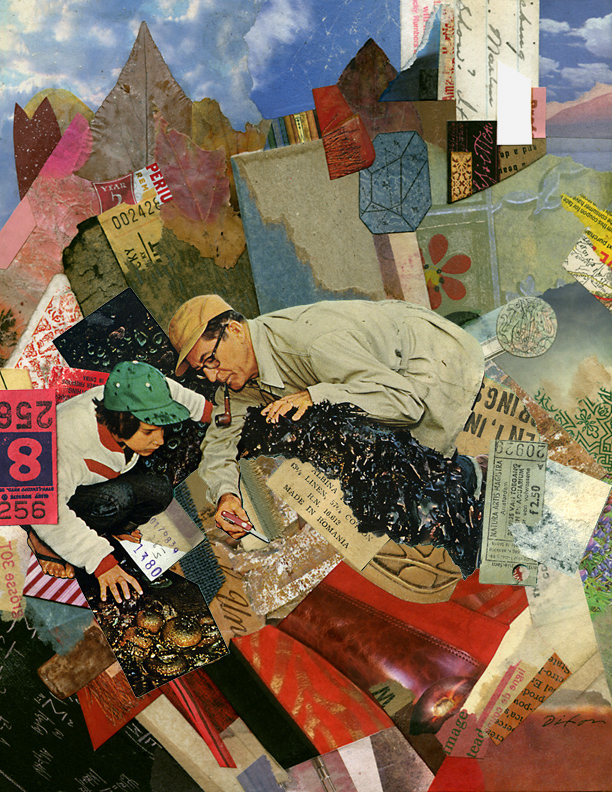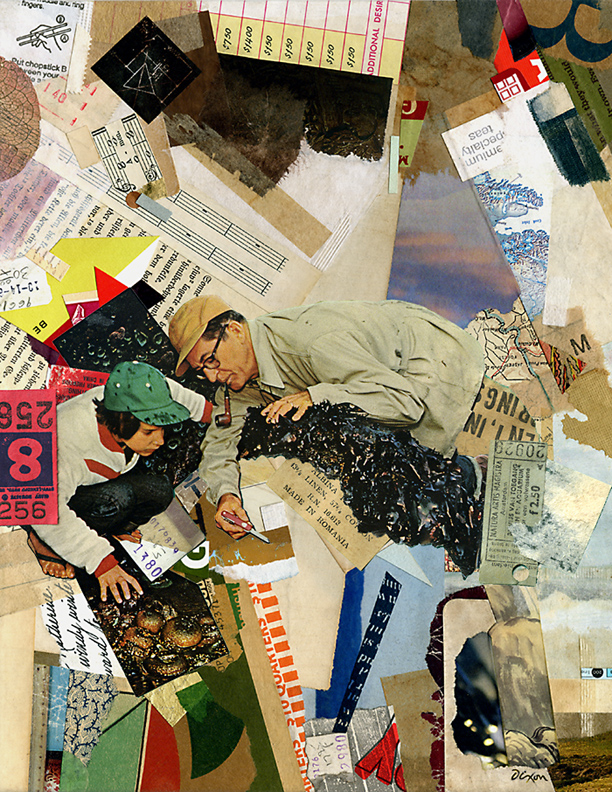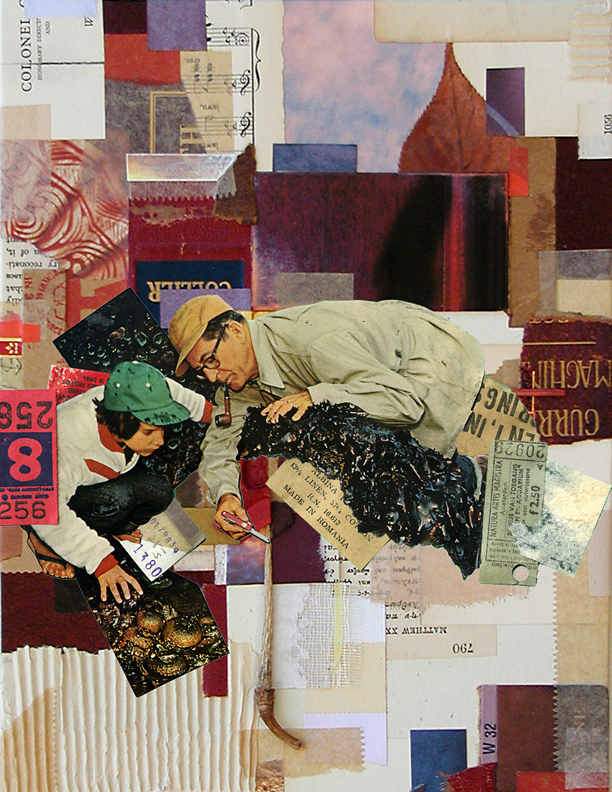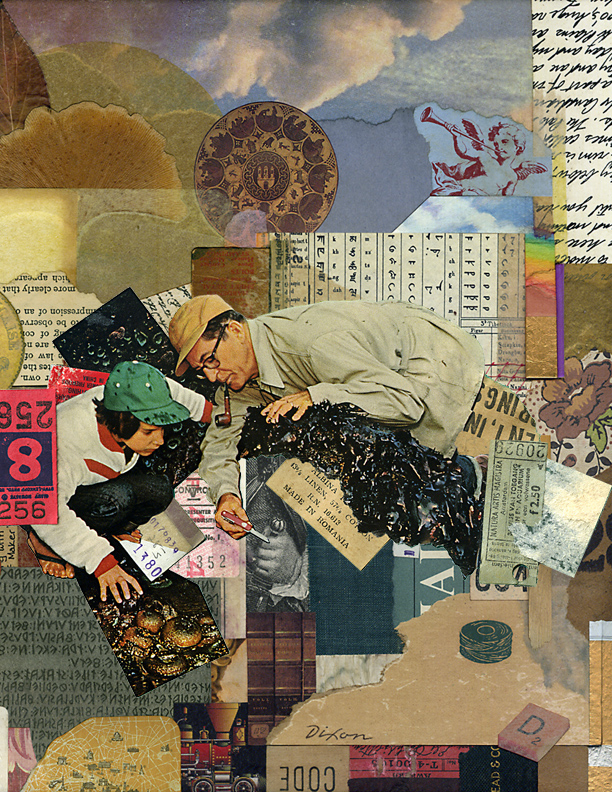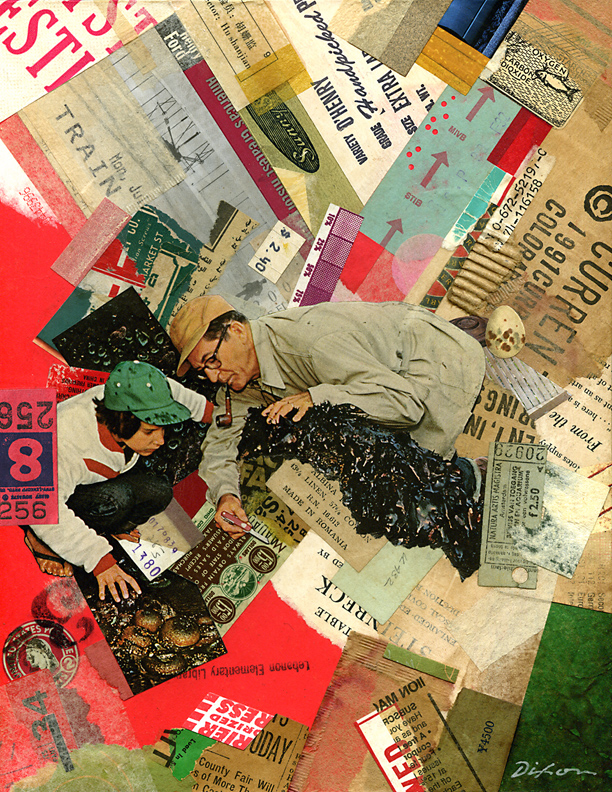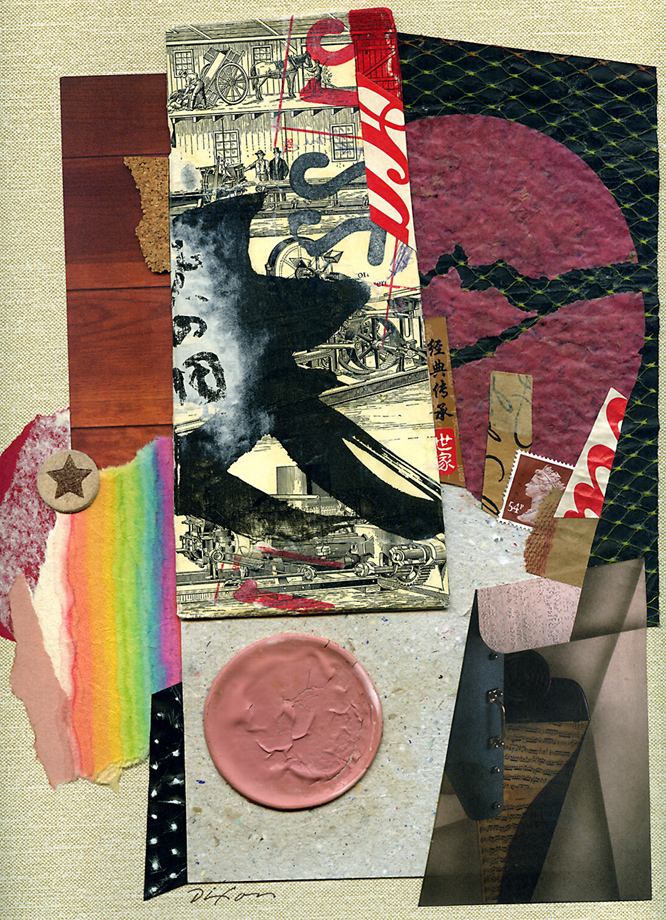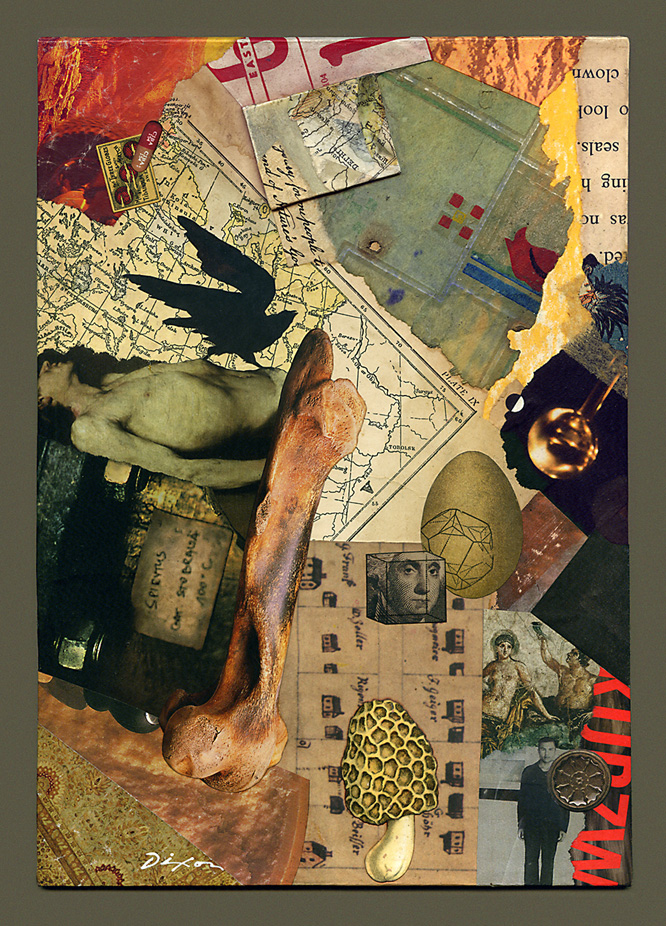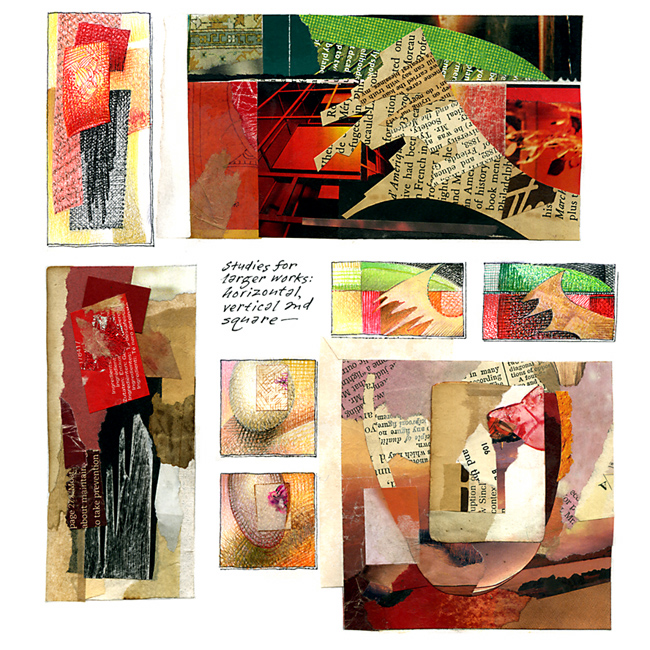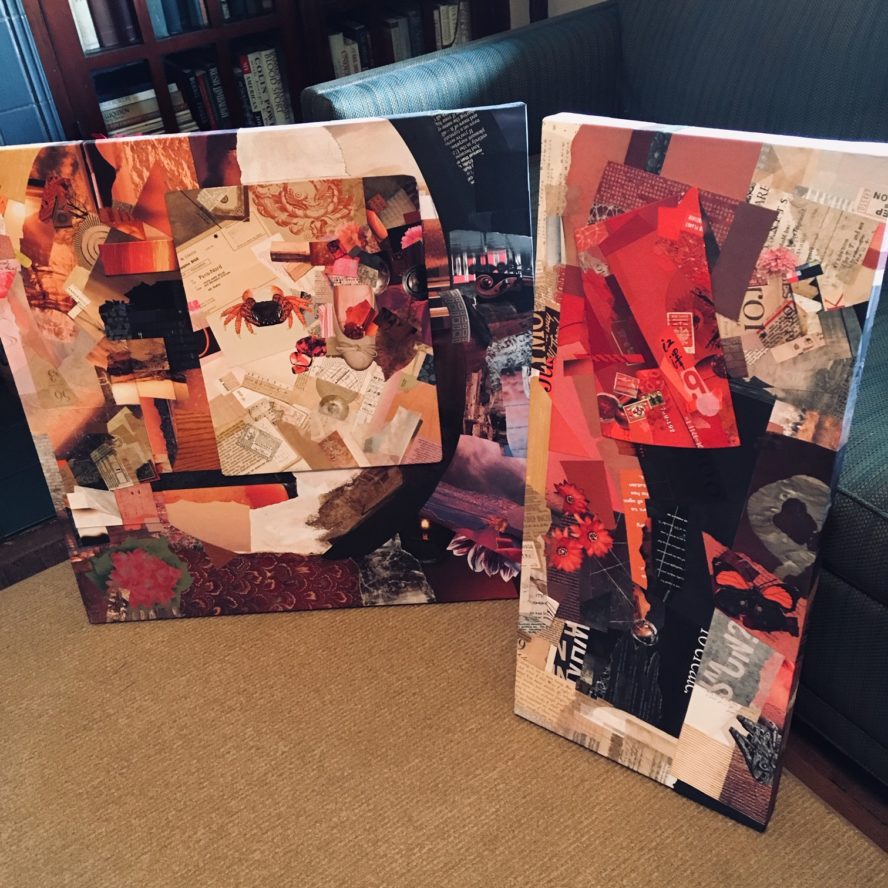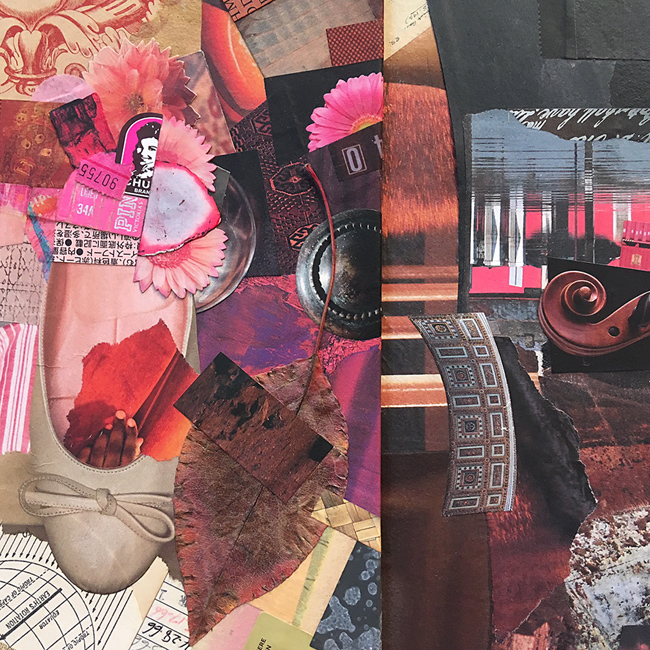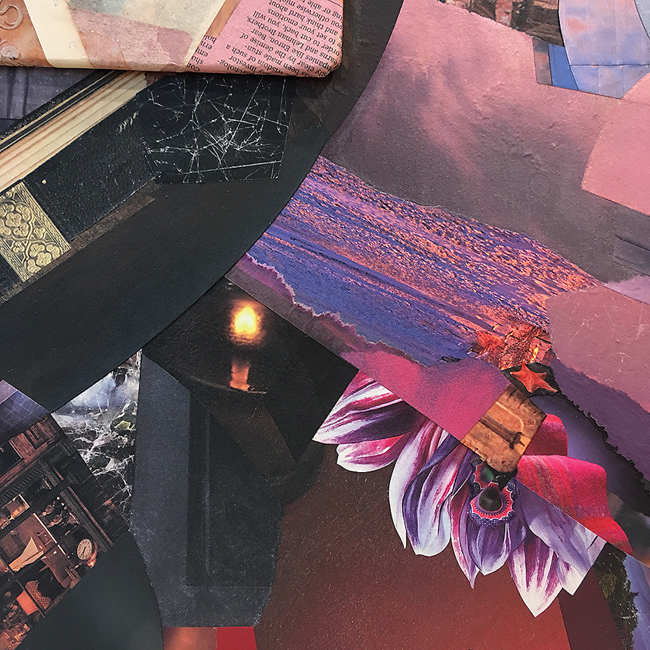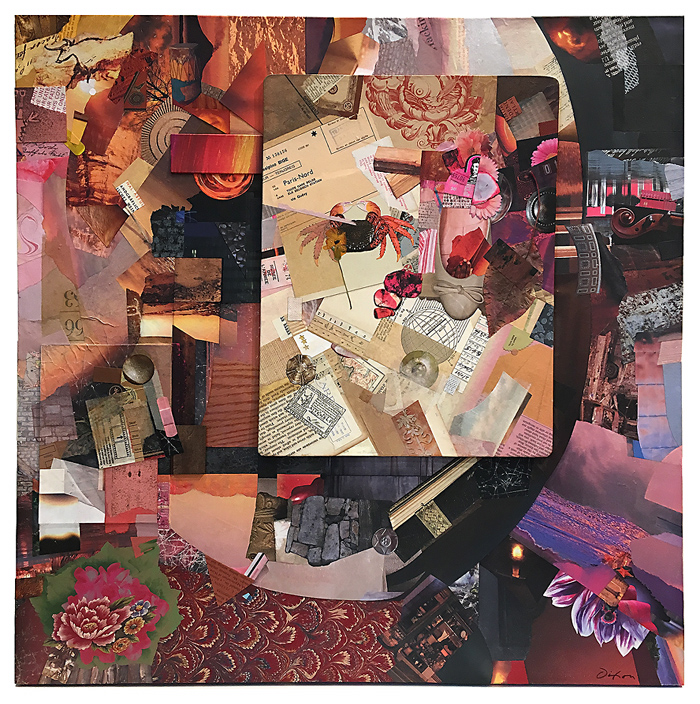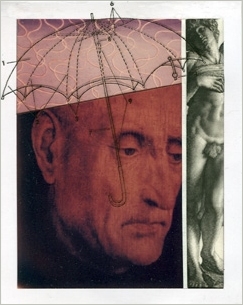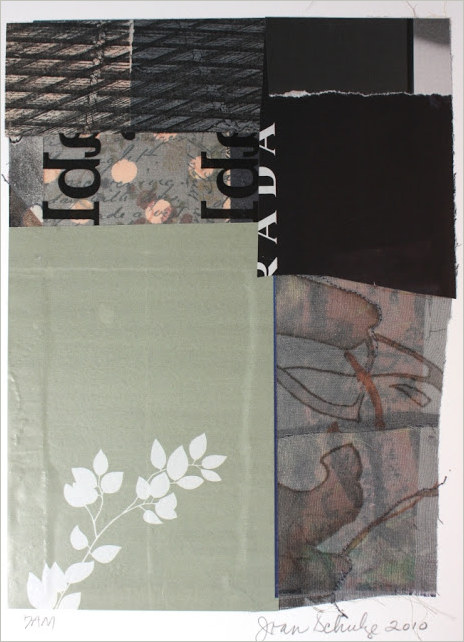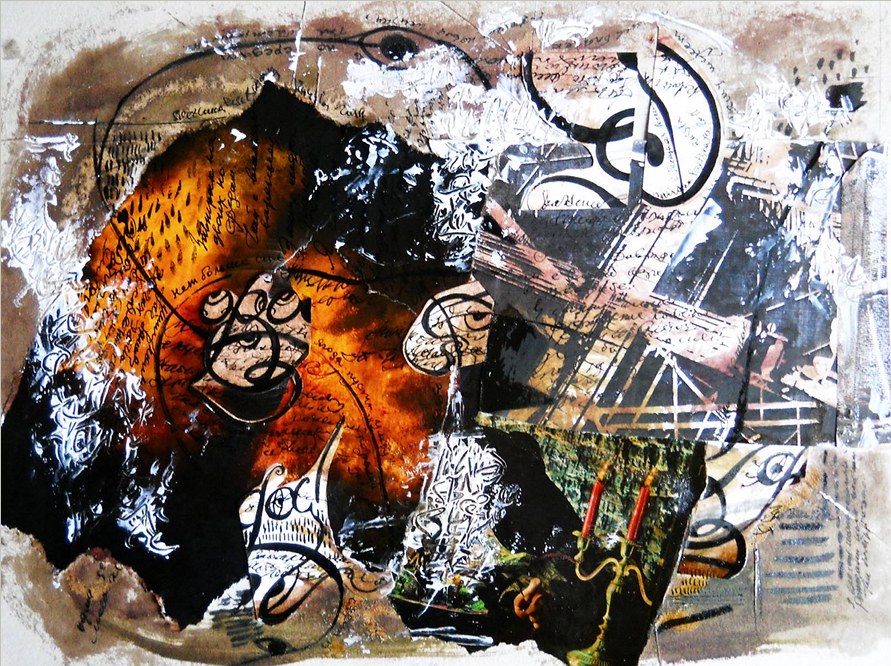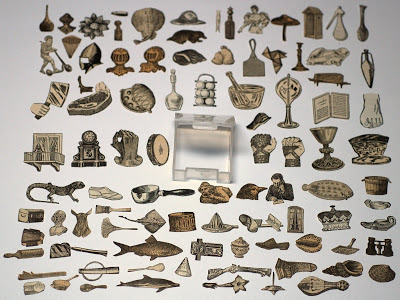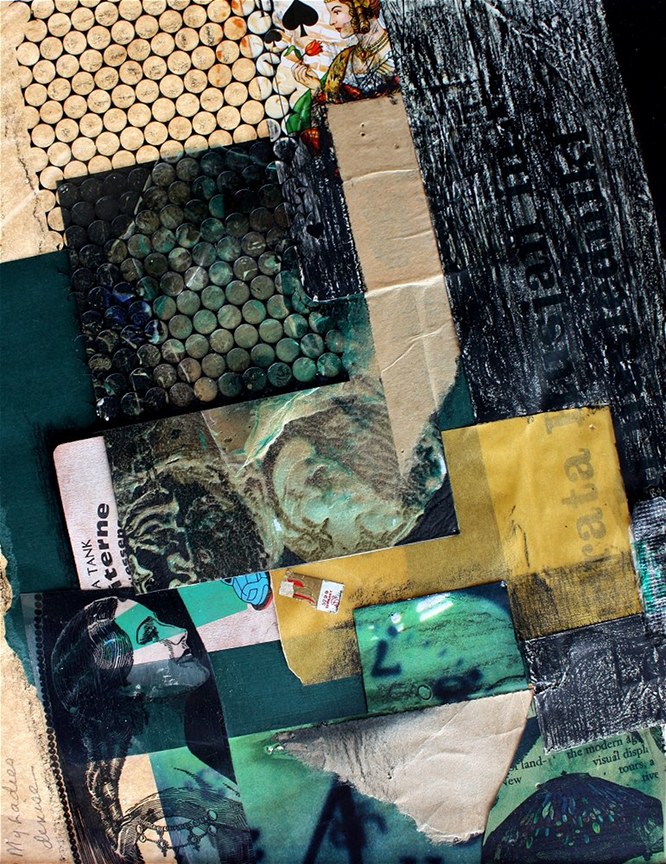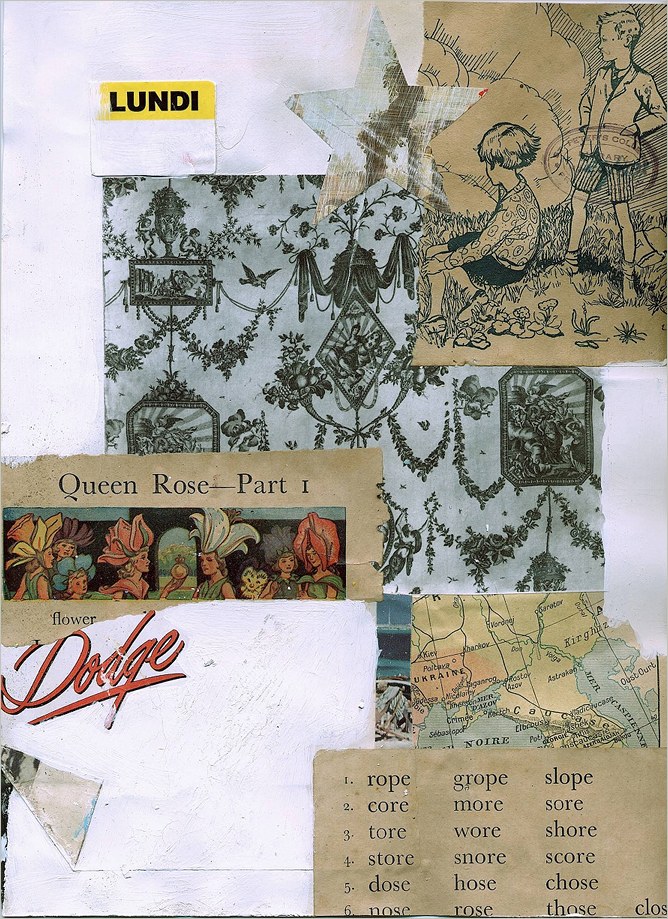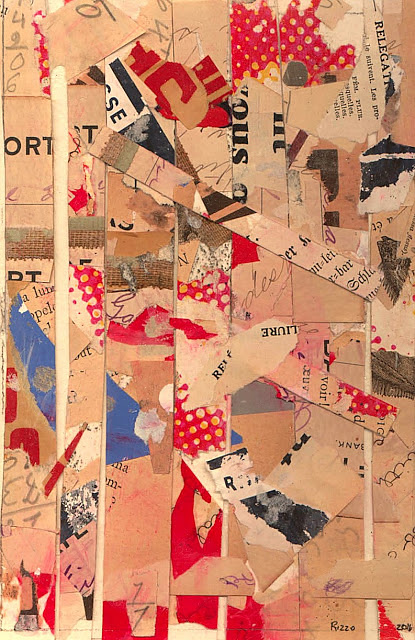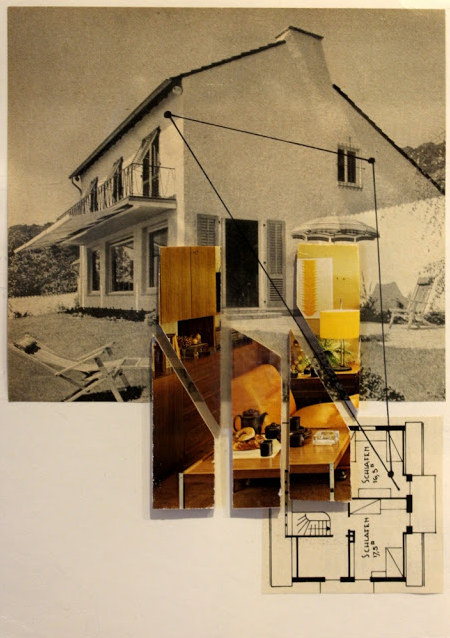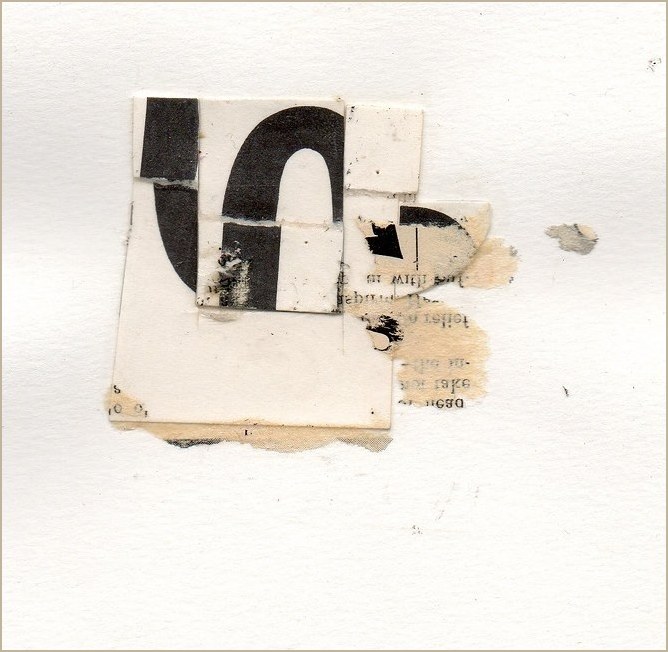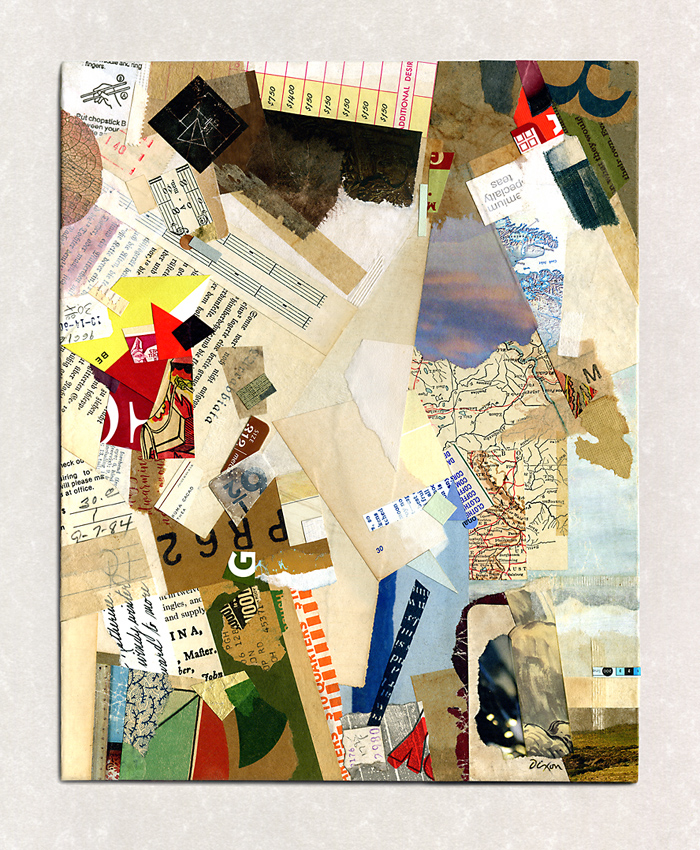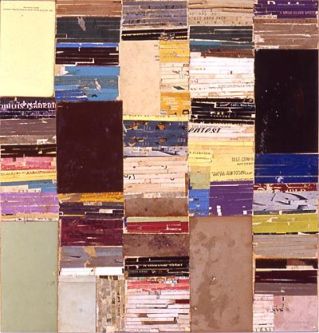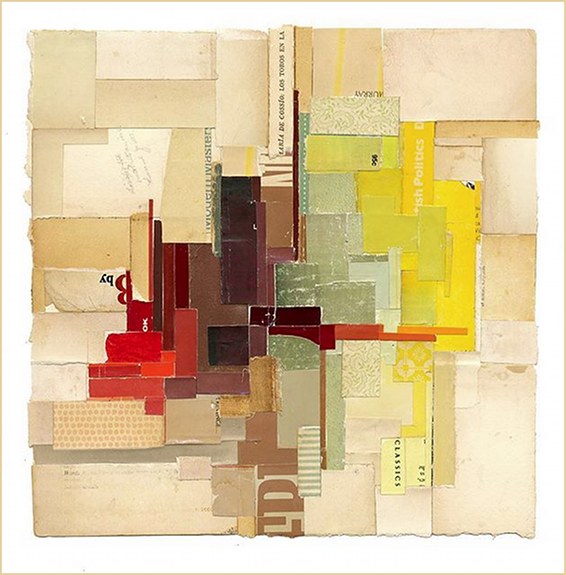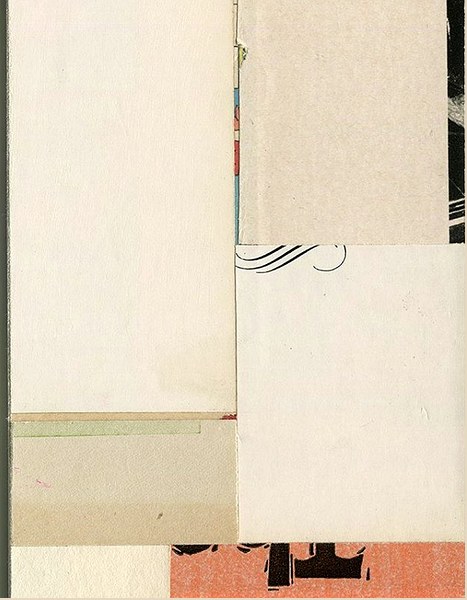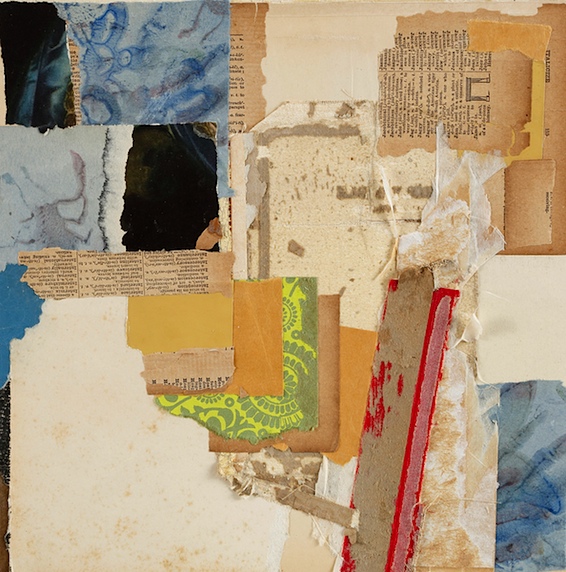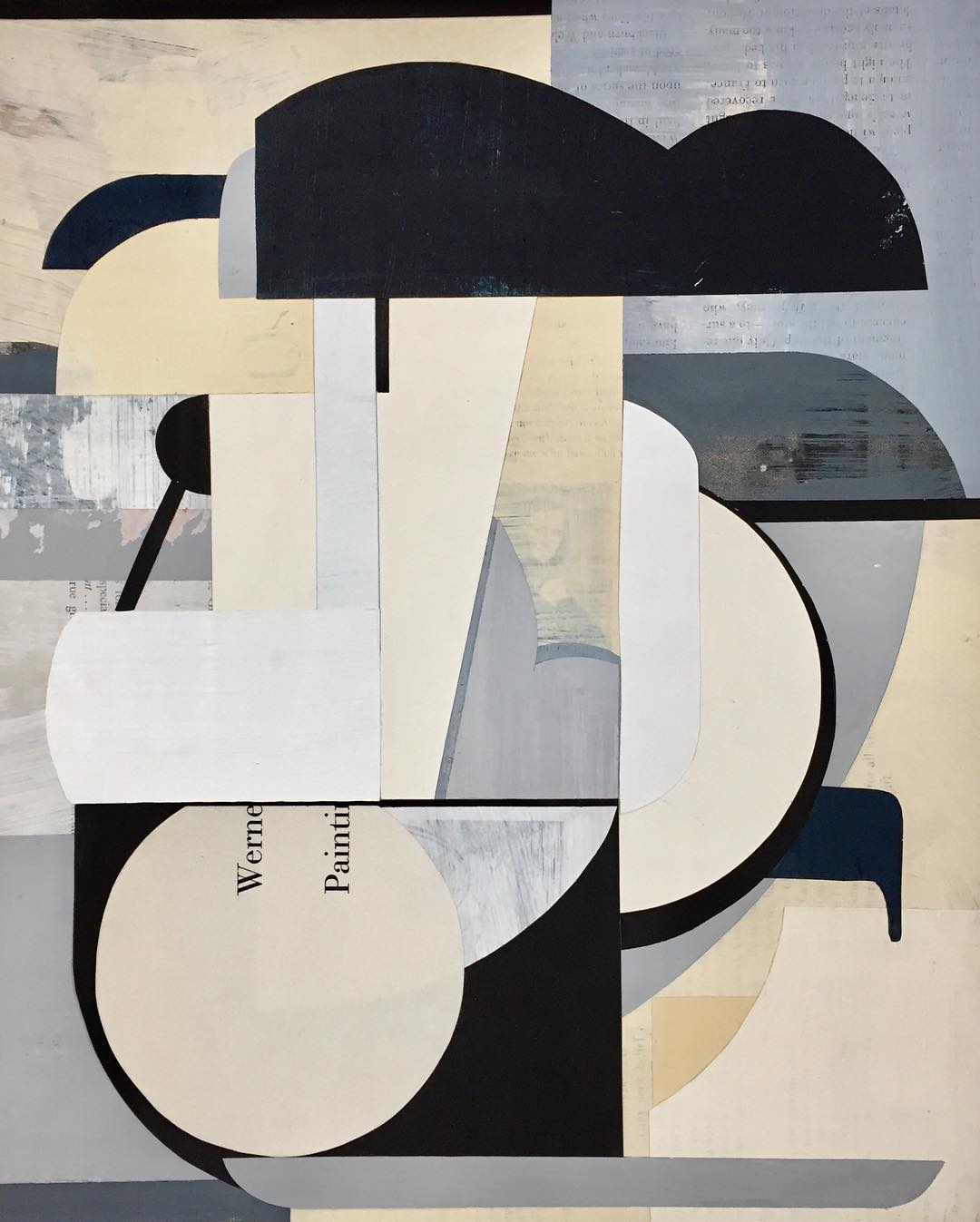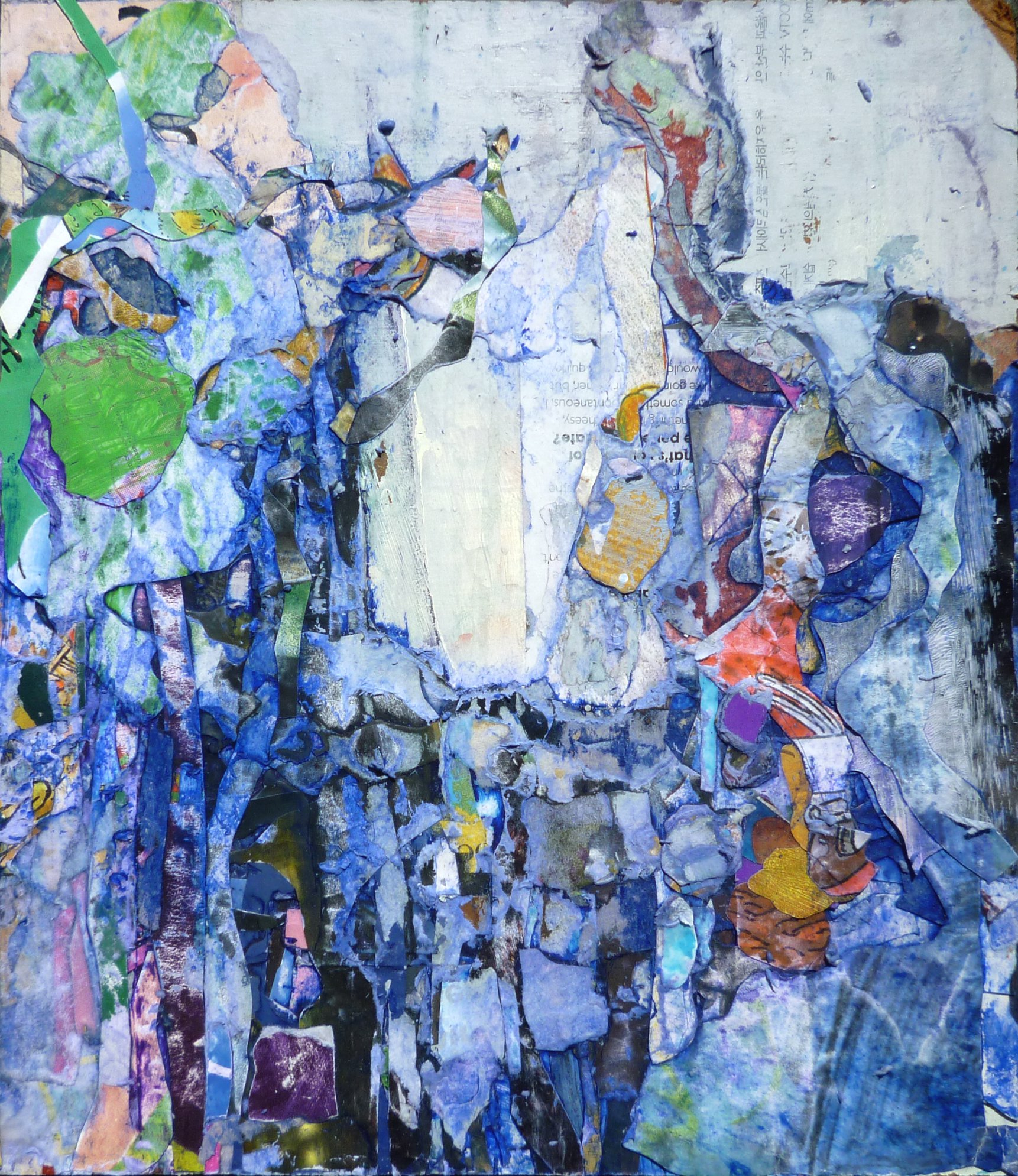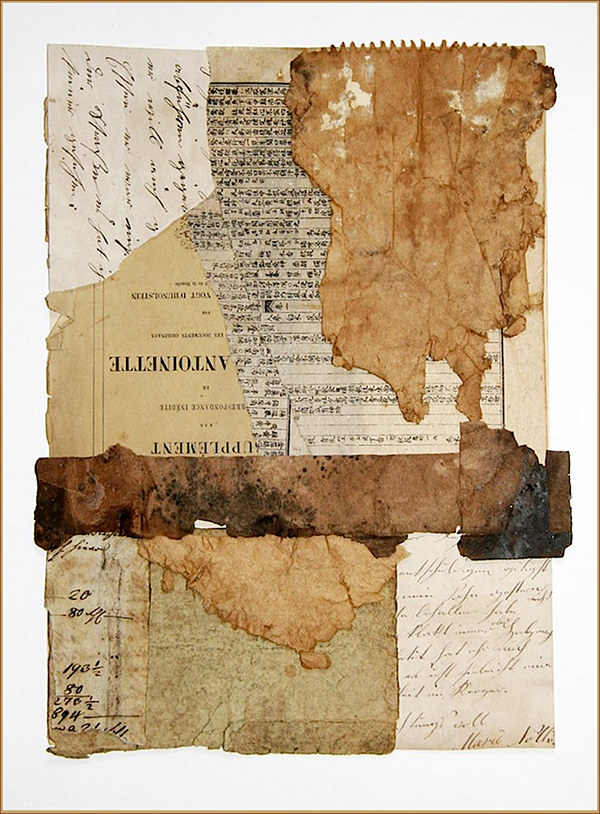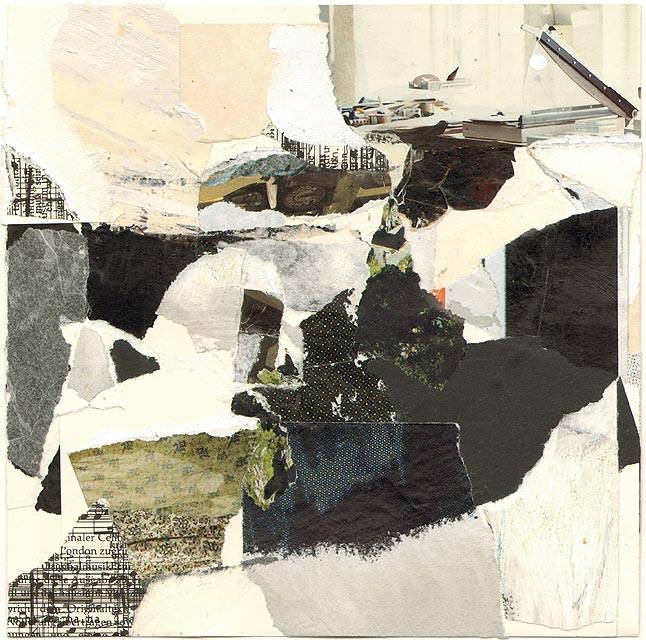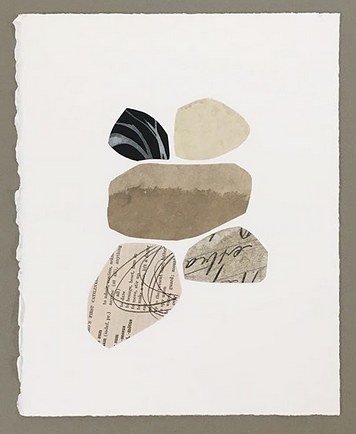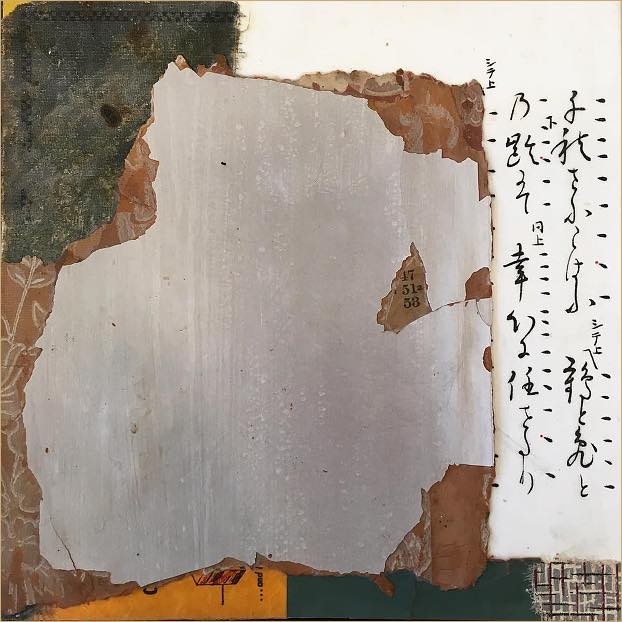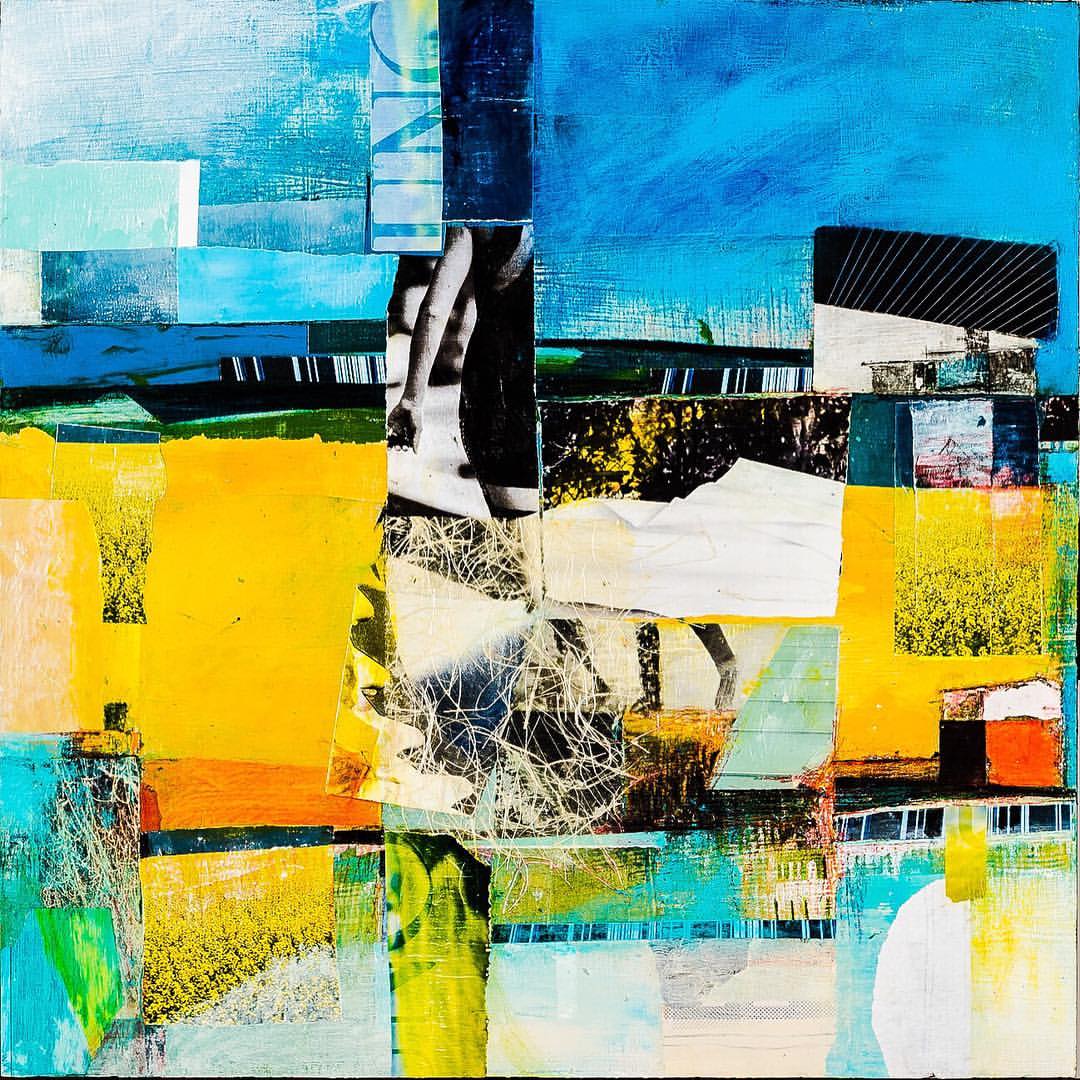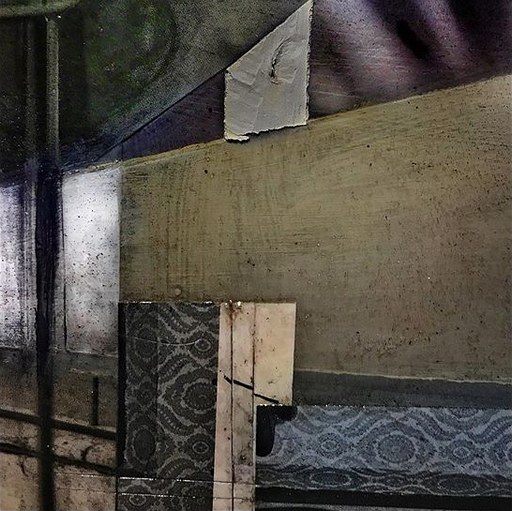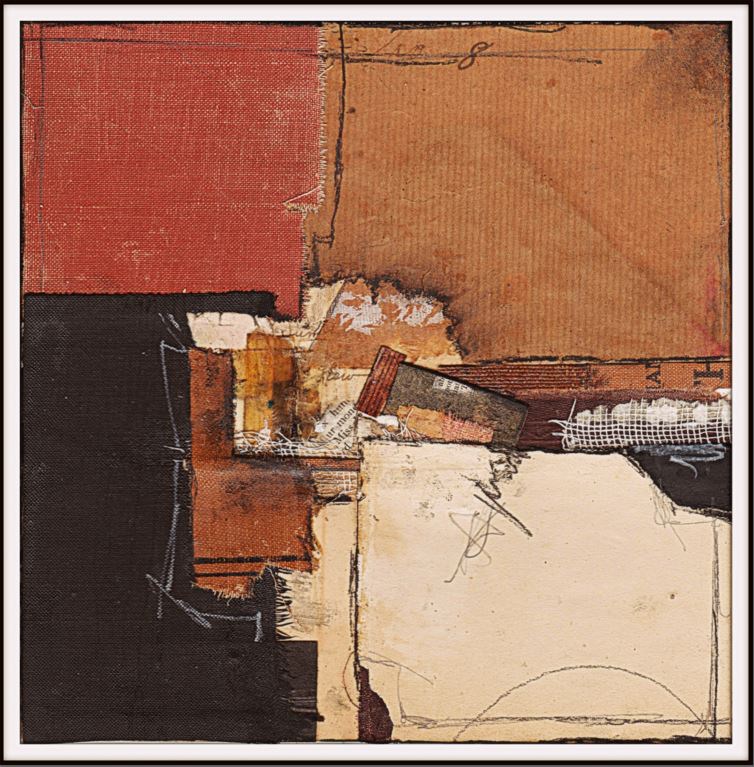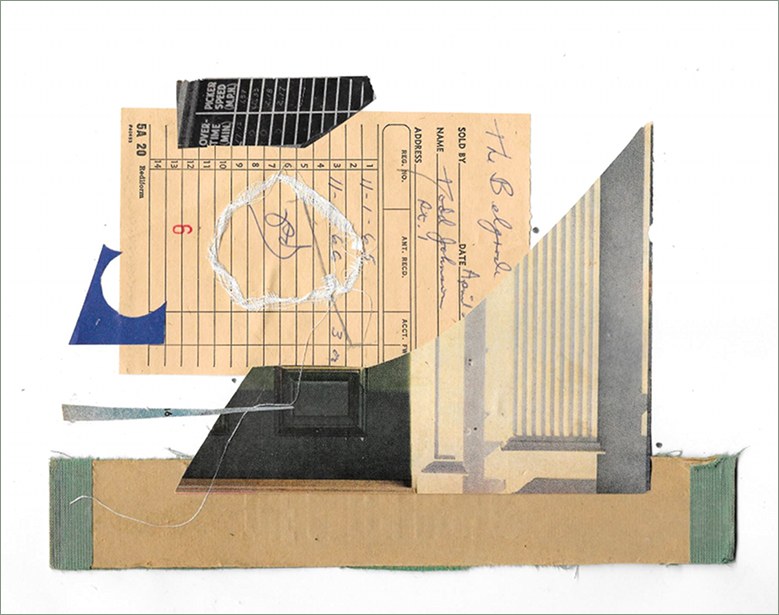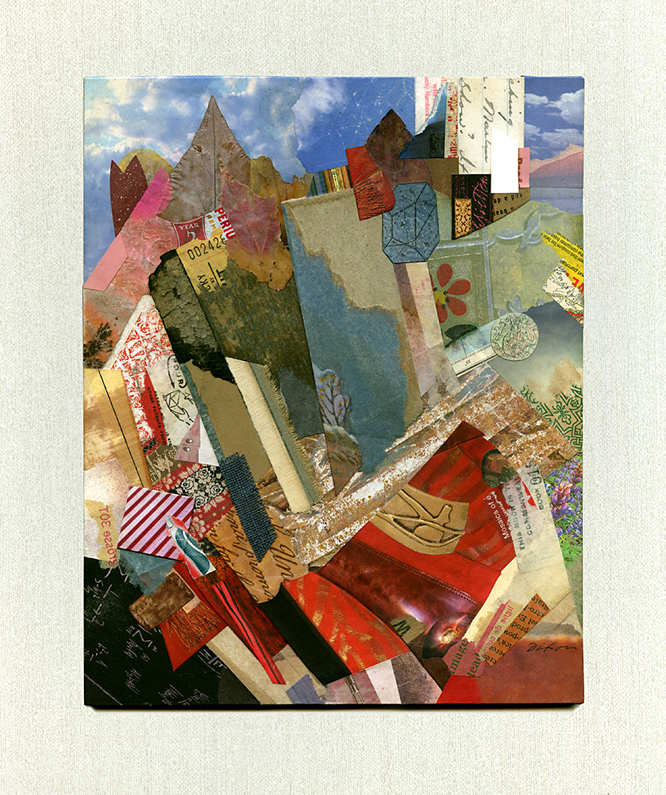detail from Autumn Ode (to Merz)
collage artwork by J A Dixon
Archive for the ‘Merz’ Category
To 2020 and beyond!
Tuesday, December 31st, 2019The Apprentice Merzologist
Sunday, November 17th, 2019“For some time, we have been inspired by the work of mr.babies. He frequently uses large eyes and sweeping vistas. His work, while expressive and multicolored, also hints at the human longing for place. mr.babies is known for posting a series of images that integrate one shared element placed on a variety of backgrounds At the end of the series, the viewer often finds the completed piece. To us, this visually represents the (often lifelong) journey to find belonging.”
— Doug + Laurie Kanyer
Kindly take a look at my submission to the OPEN CALL opportunity by the Doug + Laurie Kanyer Art Collection on the theme of “finding a place of my own.” The Yakima-based couple are building a repository of contemporary collage and using Instagram, Facebook, and other devices to elevate their agenda in the art world.
My take on this idea is to turn inward on the medium of collage itself, with a veteran “Merzologist” mentoring his young protégé on the intricacies of the Kurt Schwitters legacy.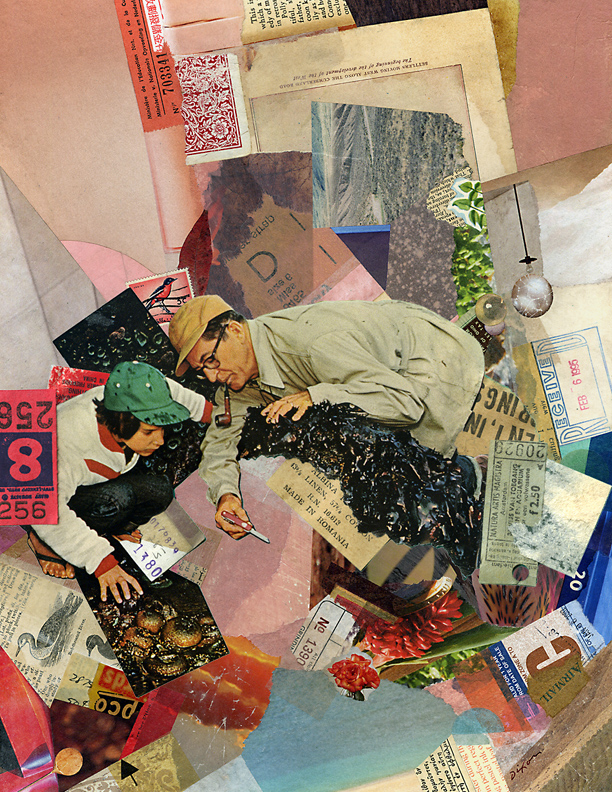 I’ve explored placing the central element against different backgrounds from my previous compositions, according to the constraints of the project. A final pasted version integrates the same subject within an entirely new “terrain” of ingredients created specifically for the entry. It’s my first official salute to a hundred years of Merz — in all likelihood, the most pioneering concept in the history of collage.
I’ve explored placing the central element against different backgrounds from my previous compositions, according to the constraints of the project. A final pasted version integrates the same subject within an entirely new “terrain” of ingredients created specifically for the entry. It’s my first official salute to a hundred years of Merz — in all likelihood, the most pioneering concept in the history of collage.
As an artist, Merz means more to me than finding a place of my own. In the words of the great innovator, it is about “creating relationships, preferably between all things in the world.” I know that I’ve used the quotation a number of times at this site, but is it not as true today as it ever has been? Upwards of 500 works have been submitted to the Kanyer exercise from artists worldwide, another indication of how collage has exploded in the emerging era of social networks.
The Apprentice Merzologist
collage on book cover by J A Dixon
8.5 x 11 inches
part of the #findingaplaceofmyown project
Ding-ding-ding. The market is open!
Thursday, November 14th, 2019The Holiday Market sponsored by the Art Center of the Bluegrass is open — a great way for everyone in our community to support ART LOCAL with their gift giving. I have collage miniatures, wood engravings, and 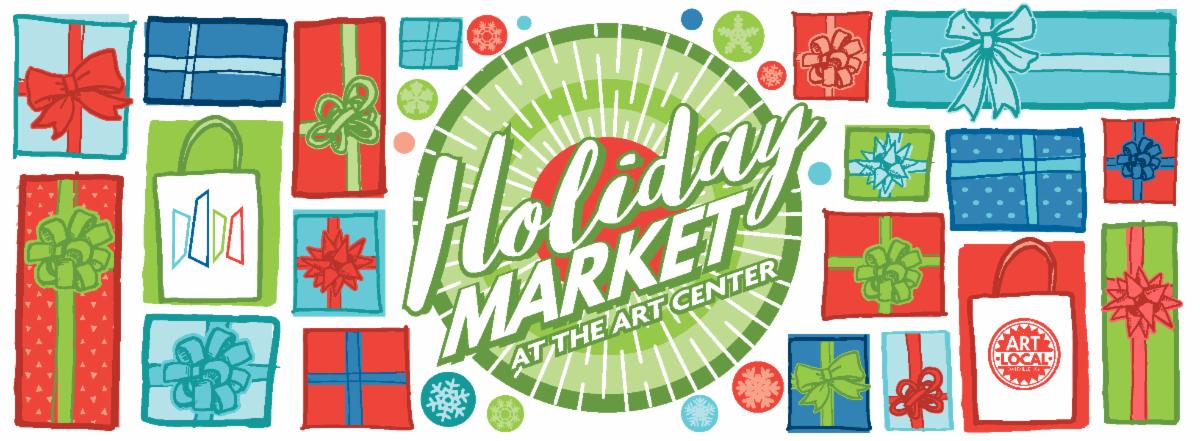 note cards available (They can also be purchased online by those who aren’t anywhere near Central Kentucky!). I also made a couple of new Merz Pictures just for the season, continuing my “Market Shard” series. The opening reception is tomorrow, from 5:30 to 7:30pm. I suspect there will be a crowd, so perhaps you might bump an elbow with me.
note cards available (They can also be purchased online by those who aren’t anywhere near Central Kentucky!). I also made a couple of new Merz Pictures just for the season, continuing my “Market Shard” series. The opening reception is tomorrow, from 5:30 to 7:30pm. I suspect there will be a crowd, so perhaps you might bump an elbow with me.
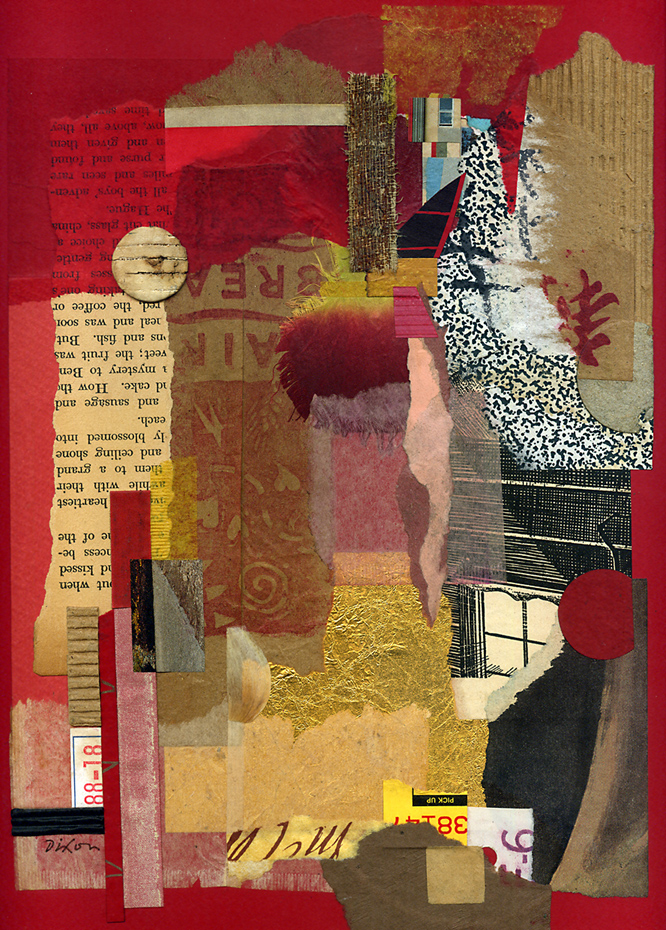
Something Given
collage artwork by J A Dixon
9 x 11.625 inches
Purchase this artwork!
With Mind Serene
collage artwork by J A Dixon
8.375 x 11.375 inches
Purchase this artwork!
Therapeutic factionalism or personal catharsis?
Tuesday, August 6th, 2019“Anger is a very limiting emotion. There’s not much you can do with it. There’s no hope in it.”
— Wendell Berry
There was a time when the arts may have held the capacity to alter the world around us. From time to time, music probably has. Perhaps the dramatic arts, too. The oral and written arts of language certainly have, and they remain highly consequential, but the notion that those engaged in artistic “visual statements” can affect society is an illusion. The early 20th-century avant-garde believed they could, and maybe they did to some limited extent, while the attention of a less distracted elite was seized. At any rate, this innovative class took what they had absorbed, rejected much of it, and cultivated the vocabulary of the modern art forms which influence the bulk of what artists do today. And almost all of what we do now has very little if any catalytic effect on evolving civilization — especially if it was overtly intended to do just that. But make no mistake about it, “message art” has been, is, and can be a significant catharsis for creative individuals. Rest assured that it will reinforce solidarity among people of like mind. It can also be relied upon to irritate many of the others.
Taboo Faction
collage catharsis by J A Dixon
8.125 x 11.5 inches
Purchase this artwork.
Worthy of note . . .
Tuesday, September 18th, 2018Sharing a major announcement in the world of collage and assemblage: The Ontological Museum has undertaken an entire makeover of its online archives. Let all doff their hats to Cecil Touchon!
Beware — connoisseurs of the collage medium can be swept into this magnificent black hole of imagery. Just a few outstanding examples are featured below.
The Sun Always Shines on TV
collage artwork by Cory Peeke, 2010
7 am
collage artwork by Joan Schulze, 2010
Ritual 2
mixed-media collage by Svetlana Pesetskaya, 2011
Case #10
small things by Hope Kroll for Fluxcase Micro Museum, 2011
(title unknown)
mixed-media collage on paper by Denise Pitchon, 2012
Queen Rose Score
collage on paper by Matthew Rose, 2012
(title unknown)
collage for Dada Centennial by Bob Rizzo, 2016
Homage to Merzbau
collage artwork by Sabine Remy, 2016
(title unknown)
asemic collage on paper by Jim White, 2018
(images courtesy of The Ontological Museum)
Precursors have precursors
Tuesday, August 21st, 2018“We do not analyze works of art because we want to imitate them or because we distrust them.”
— Paul Klee
The other day the world learned about an unpublished Ernest Hemingway short story. If there had not been a Mark Twain first, would literature know Hemingway’s writings at all? Could there have been an Isaac Asimov, Stan Lee, or Gene Wolfe without a Verne or Burroughs? The J.K. Rowling body of work without an Austen or Tolkien? 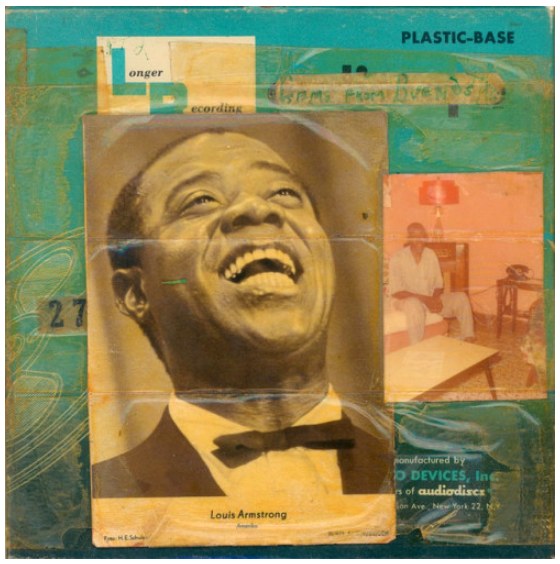 Similarly, all of today’s rock music can be linked to direct influences — to bands such as Ramones, Led Zeppelin or the Beatles, which, of course, had their own precursors. Would jazz exist in its current form without the innovations of Armstrong and all those who inspired him? Imagine a contemporary musician saying, “I really haven’t paid attention to any music that was recorded before I started to play.” And yet, not infrequently, collage artists will boast that they have little use for art history (all the breakthroughs of bygone creators who dug the swimming pools in which they now frolic).
Similarly, all of today’s rock music can be linked to direct influences — to bands such as Ramones, Led Zeppelin or the Beatles, which, of course, had their own precursors. Would jazz exist in its current form without the innovations of Armstrong and all those who inspired him? Imagine a contemporary musician saying, “I really haven’t paid attention to any music that was recorded before I started to play.” And yet, not infrequently, collage artists will boast that they have little use for art history (all the breakthroughs of bygone creators who dug the swimming pools in which they now frolic).
It is argued that modern artists were the first to decide that visual art would be about art, rather than subject matter. Nonsense. Art has always been about art, because it always has been structured on prior foundations. The idea that any artist can burst on the scene as an original is absurd. Nobody who comes out of early childhood with any level of awareness has not built an inventory of perceptions — countless images from the culture around them. Each of these individual influences involved creative activity based on another bank of stimuli, and so forth, back to the first proto-human who picked up a piece of charcoal to make interesting marks on a stone (and was probably knocked on the head by another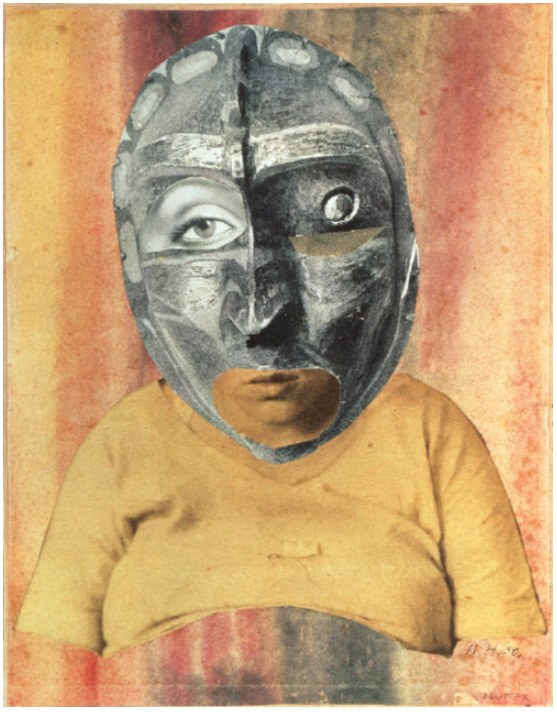
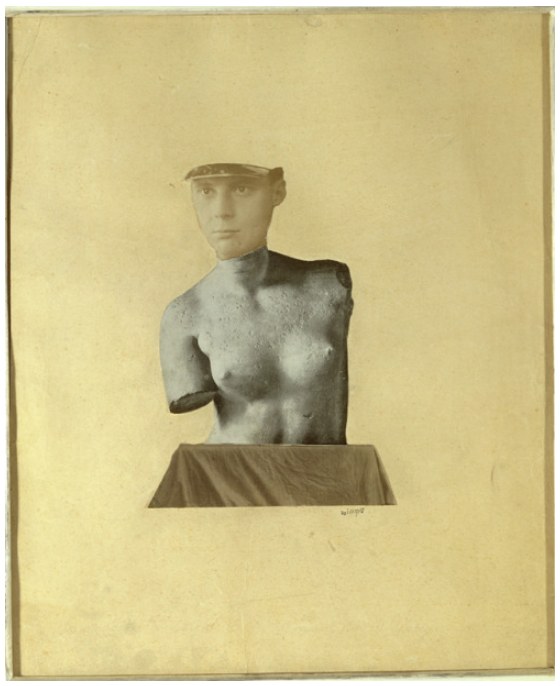 who judged the action as irrelevant to group survival).
who judged the action as irrelevant to group survival).
Perhaps I have belabored my point. Perhaps it is a point that anyone who reads this would not need emphasized in the first place. Isn’t it obvious to us that no art form is more about all these churning influences from untold visual decision makers — painters, printers, illustrators, photographers, designers — than the medium of collage itself? So, let us all continue to study the collage artworks of the explorers who came before us, to trace the direct lineage of their concepts and techniques, to recognize that valuable inheritance in the work of our peers, as well as in the composition taking shape on the surface before us, and then, fully informed, to push confidently into the second century of collage.
Tranquil Ode (to Merz)
collage homage by J A Dixon
9.5 x 11.875 inches
Purchase this artwork.
Various and Sundry Scraps ~ No.1
Thursday, April 26th, 2018• Don’t we all want to be Cecil when we grow up?
• There was a time when Merz was deemed degenerate.
• Destruction of the Merzbau and the human toll in Hannover.
• Kurt Schwitters and his fellow artists in captivity.
• How synthetic cubism led to collage as a modern art.
Thanks to The Kurt Schwitters Society for sharing several of these links.
Mouse in the House
Saturday, March 31st, 2018“You can’t really make ideas, create ideas. You know, all ideas are the same. They just wander by. If your house has mice, you never know when they’re going to show up, or how, or in which room. and great ideas are the same. They’re like mice. Just a mouse. A mouse in the house. And you step on its tail and you go, ‘Hold it, buddy.’”
— Jerry Seinfeld
Ideas will suggest ingredients, but, as often as not, ingredients will spark ideas. Actually, I prefer the latter. In discussing the groundbreaking Merz pictures of Schwitters, curator Isabel Schulz asserts that his materials “surrender their original function … but not all semantic meaning.” Those meanings can generate layers of additional meaning when ingredients combine in synergy. Before long, if the exterminator is not on site, the house is happily full of mice.
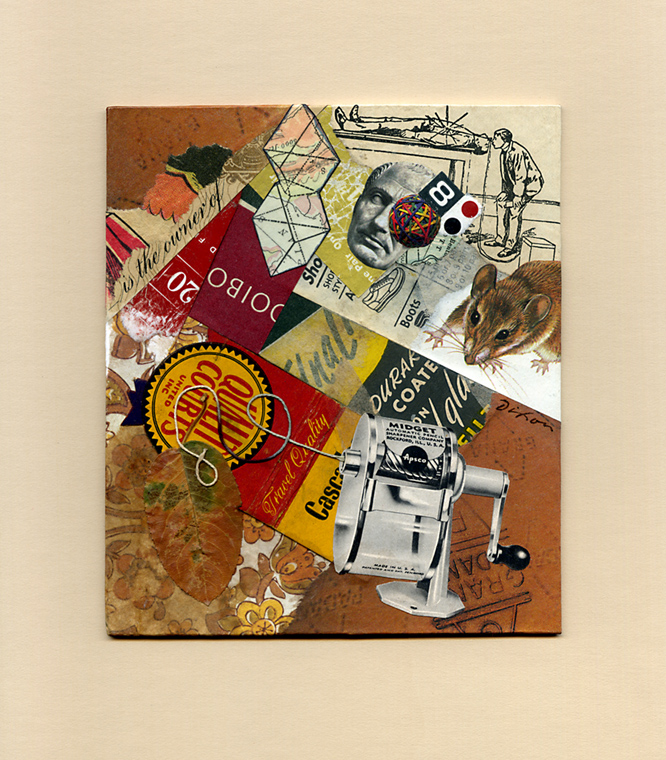
Mouse in the House
collage miniature by J A Dixon
4.75 x 5.5 inches
Purchase this artwork.
Master of Merz
Saturday, March 17th, 2018“Schwitters began making collages in 1918 and produced them in large numbers for the remainder of his career. In 1919 he began using the term ‘Merz’ (which originated from the German word ‘Kommerz’, meaning ‘commerce’) to describe his principle of assembling found materials.”
— Louise Hughes
Das Kirschbild — a fitting followup for the previous entry on abstraction.
And for those of us who never tire of learning new things about the incomparable Master of Merz:
• from the Armitt Museum Collection in the Lake District
• from the Sprengel Museum Hannover
Merzbild 32 A. Das Kirschbild
Kurt Schwitters, 1921
The Museum of Modern Art, New York
Abstraction in Collage
Saturday, March 10th, 2018“In the ’20s, dadaist Kurt Schwitters collected bits of detritus such as cigar bands and bus tickets and used them in collages. They were shocking then but with the passage of time have taken on the aura of classics: vibrantly colored and harmonious arrangements of abstract forms and only incidentally assemblages of junk.”
— John Ashbery
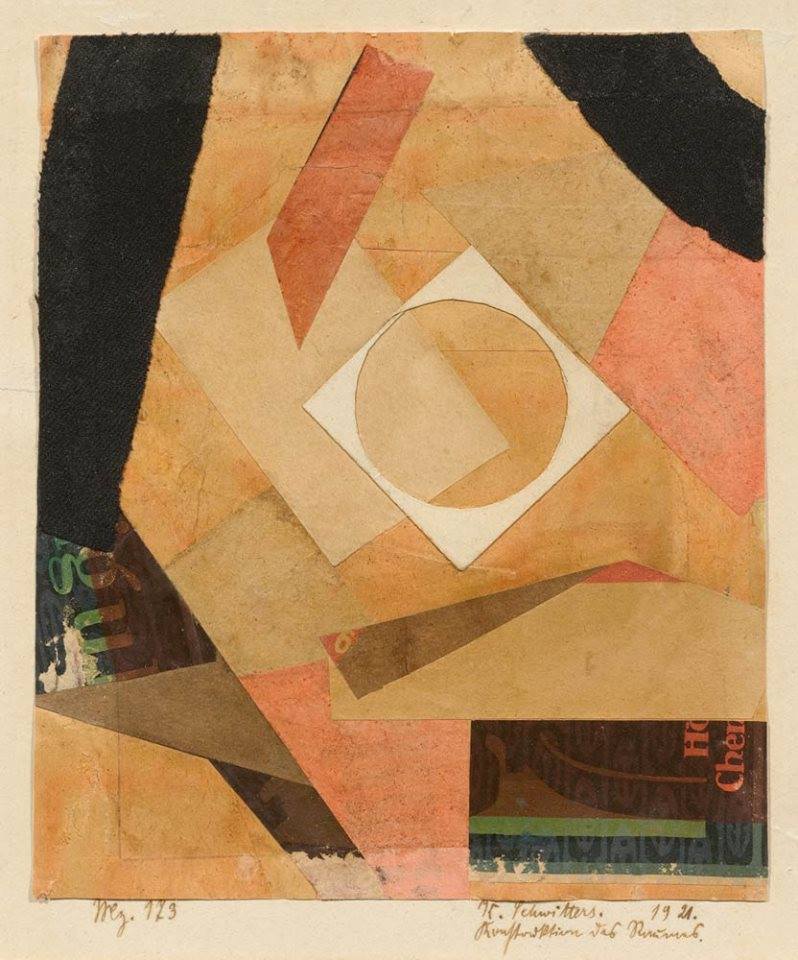
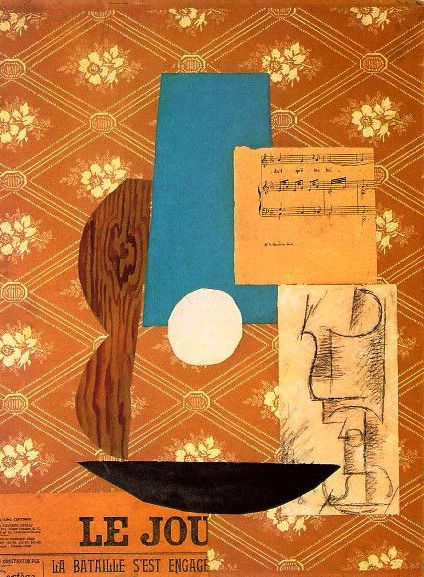 About a hundred years ago, a handful of Europeans had set out to invent what we now know as the medium of collage. Nearly all of them were painters. From the beginning, collage was rooted in modern art concepts that were emerging at the same time — the fundamentals of abstraction. Thus, the evolution of abstraction and collage in the 20th century are entwined, and remain so in a burst of contemporary activity in this post-centennial period. Next year will mark a full century of Merz. Artists working in collage abstraction carry the “creative code” of Kurt Schwitters and his seminal innovations.
About a hundred years ago, a handful of Europeans had set out to invent what we now know as the medium of collage. Nearly all of them were painters. From the beginning, collage was rooted in modern art concepts that were emerging at the same time — the fundamentals of abstraction. Thus, the evolution of abstraction and collage in the 20th century are entwined, and remain so in a burst of contemporary activity in this post-centennial period. Next year will mark a full century of Merz. Artists working in collage abstraction carry the “creative code” of Kurt Schwitters and his seminal innovations. 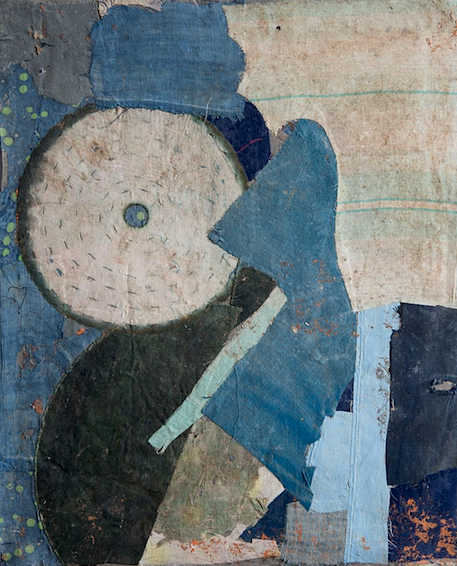 But, allow me to pause here and point out something that has become increasingly obvious: conventional art history was woefully male centered. Intentionally or not, the discipline would downplay or ignore many exceptional women artists, and that includes collage antecedents which were largely the domain of females, especially in the domestic or folk arts. For example, an interesting feature at moowon.com highlights the forgotten art of Chinese textile collage.
But, allow me to pause here and point out something that has become increasingly obvious: conventional art history was woefully male centered. Intentionally or not, the discipline would downplay or ignore many exceptional women artists, and that includes collage antecedents which were largely the domain of females, especially in the domestic or folk arts. For example, an interesting feature at moowon.com highlights the forgotten art of Chinese textile collage. 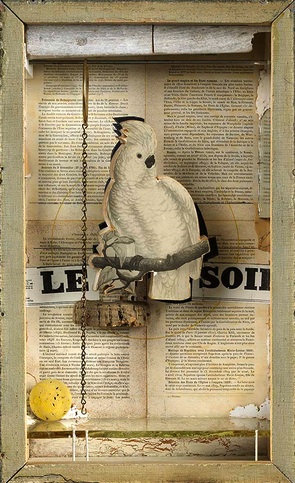 Picasso lifted visual ideas from tribal cultures. Cornell borrowed techniques tied directly to Victorian crafts. We understand that now. Modern art did not spring fully formed from the brow of Zeus like the armored goddess Athena. Fast forward to 2018. Many of the most accomplished and widely recognized collage artists of today are women. And the best part is that we know about them.
Picasso lifted visual ideas from tribal cultures. Cornell borrowed techniques tied directly to Victorian crafts. We understand that now. Modern art did not spring fully formed from the brow of Zeus like the armored goddess Athena. Fast forward to 2018. Many of the most accomplished and widely recognized collage artists of today are women. And the best part is that we know about them.
Melinda Tidwell is one of the dedicated abstractionists in collage that I enjoy following. She has a solid and very articulate designer “upstairs” guiding each decision, but her regard for the unexpected is a strong part of her intuition. Last summer, she published a two-part discussion of “order versus disorder” at her blogsite. It features abstractions by Lance Letscher and is well worth checking out.
Please indulge me as I share examples of collage abstraction from artists who continue to favorably capture my eye. Some of them range into mixed media in a way that remains very much collage. Others are strictly “painting with paper.”
Merz is alive and well in the 21st century, my friends.
(title unknown)
abstract collage by L Letscher
(title unknown)
abstract collage by M Tidwell
11zc18
abstract collage by Z Collins
Elysburg IV
abstract collage by C Chapman
Ellington
abstract collage by D McKenna
Osmosis 3
abstract collage by C Emeleus
Antoinette
abstract collage by W Strempler
Music
abstract collage by S Kraft
from her series, BALANCE
abstract collage by S A Herman
Day 18 of 40
abstract collage by C Neubauer
Red Cottage — from her series, SENSE OF PLACE
abstract collage by P A Turner
(title unknown)
abstract collage by J C Martin
Reap
abstract collage by G Cooper
Cognitives and Conclusions
abstract collage by S Ringler
Dynamic Stability
abstract collage by J A Dixon

